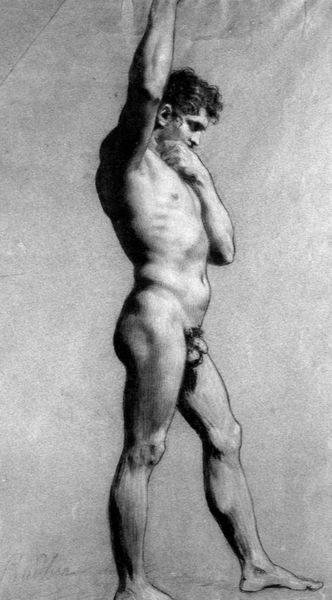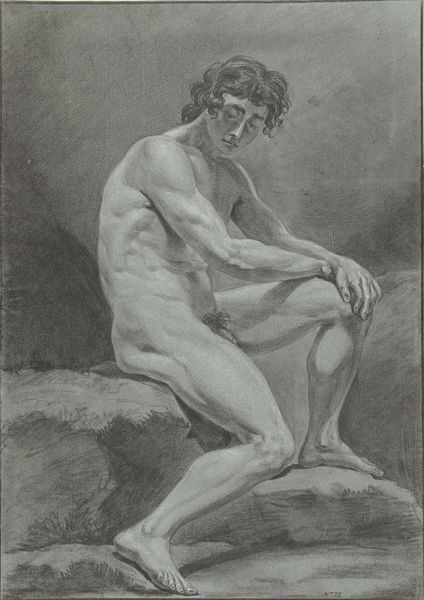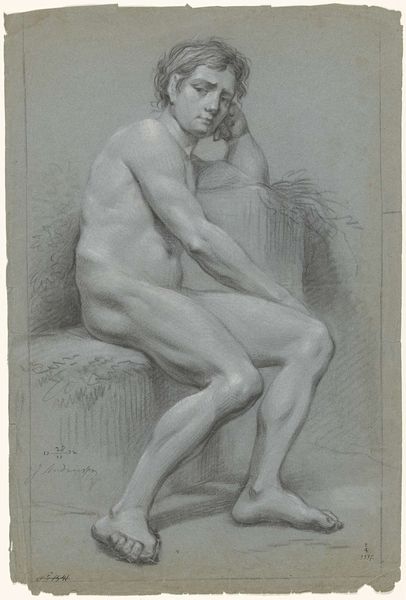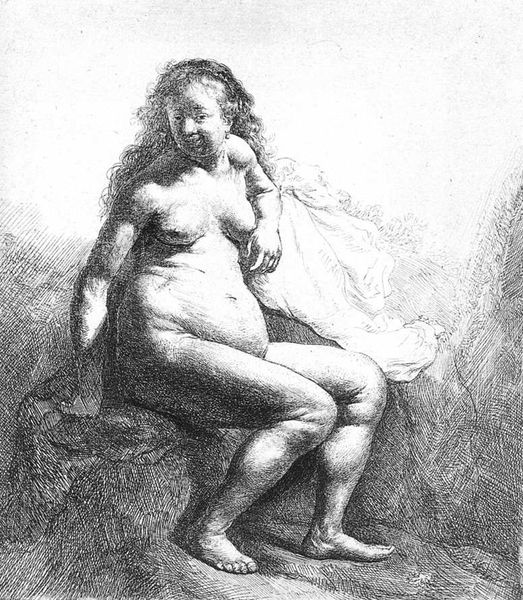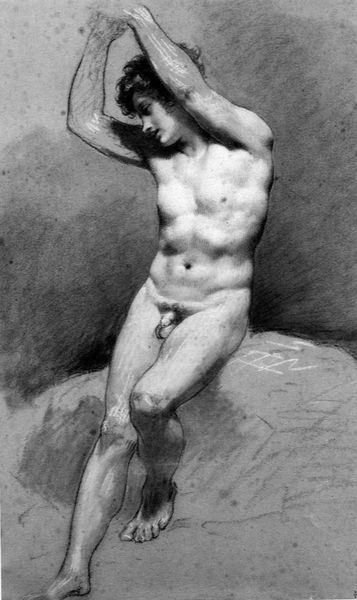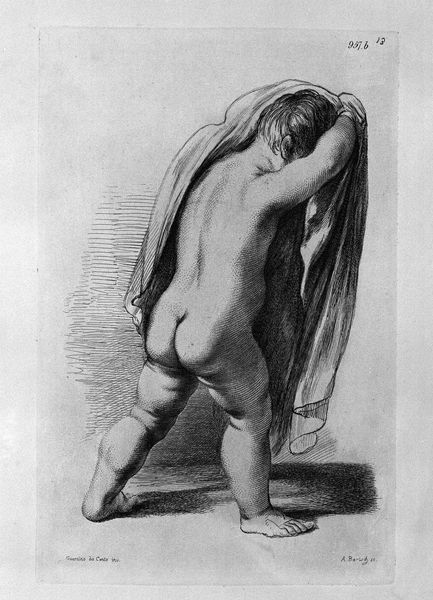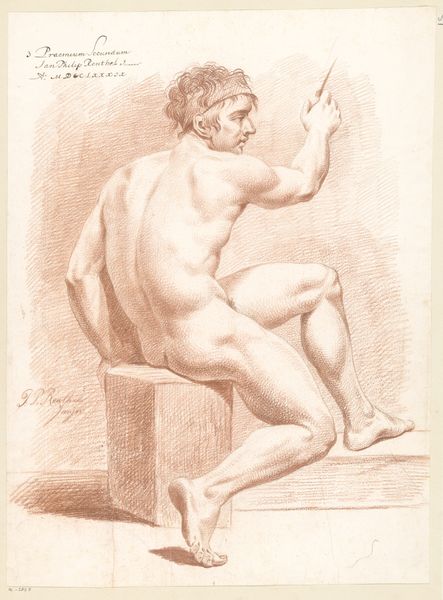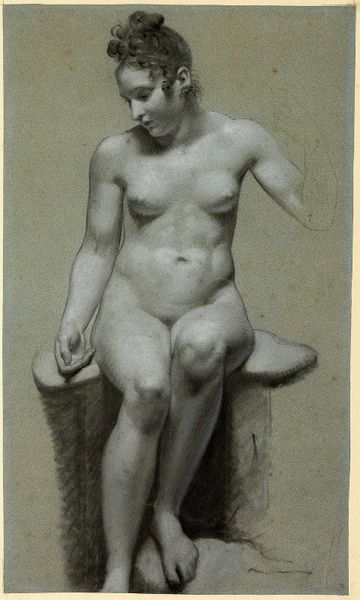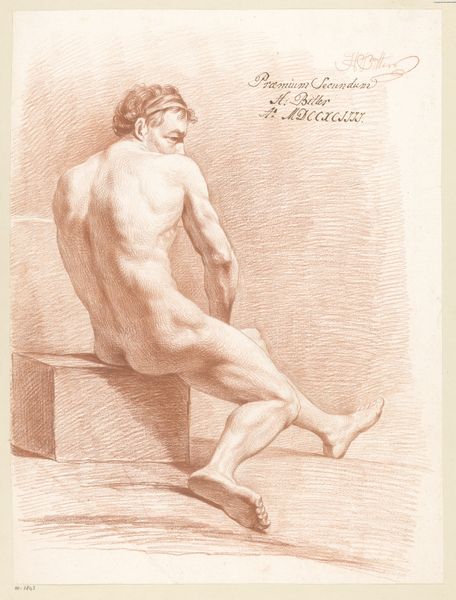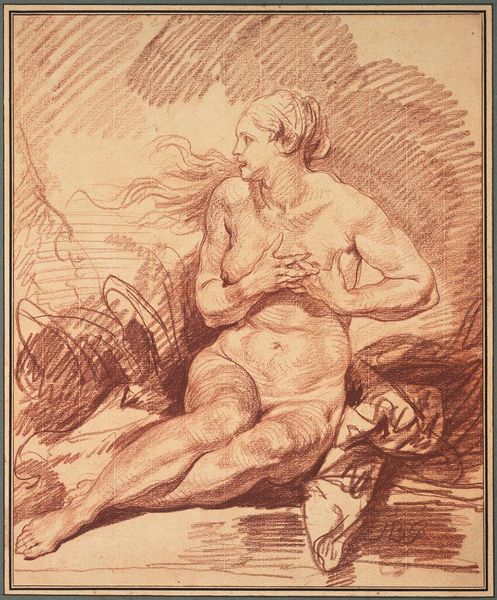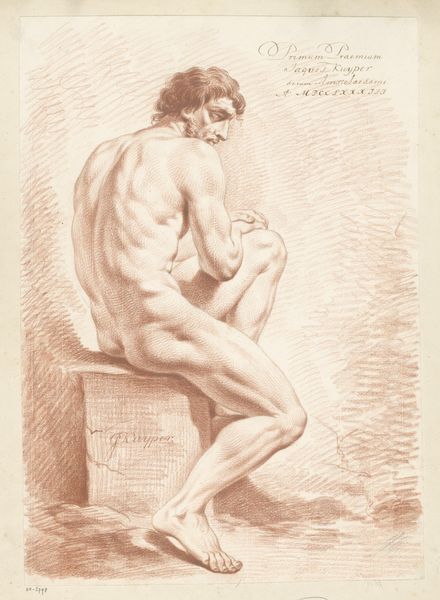
drawing, charcoal
#
portrait
#
drawing
#
portrait
#
charcoal drawing
#
form
#
female-nude
#
romanticism
#
charcoal
#
nude
Copyright: Public domain
Editor: So, we’re looking at "Seated Female Nude by a Fountain," a charcoal drawing by Pierre-Paul Prud'hon from 1800. It’s captivating; her pensive gaze is the focal point. How do you interpret this work, especially its visual symbolism? Curator: Prud'hon offers a Neoclassical figure, but tinged with emerging Romantic ideals. Nudity here isn't simply about form. The fountain, a symbol of life and purity, paired with her contemplative pose, evokes classical ideals of beauty merged with human emotion. The fountain, traditionally a symbol of renewal, combined with her downward glance could represent fleeting beauty, a rumination on time passing. Do you sense that melancholic quality? Editor: I do. I see a hint of sadness in her face and in the dark charcoal strokes. How much did Prud'hon's influences affect his symbolism? Curator: Immensely. Prud'hon stood between rigid classicism and the emerging emphasis on individual feelings championed by the Romantics. His study of the antique gave him the formal language, but his softer, sfumato style, borrowed from Leonardo, brings in emotional depth. The symbolism then serves to elevate the figure from a mere study to a poetic statement. Her gesture, resting her chin on her hand, is loaded, suggesting introspection. What does that pose mean to you? Editor: It suggests she's not just sitting, but actively thinking or reflecting. Like a muse pondering inspiration. I didn't fully see the interplay of classical and romantic influences before. Thanks! Curator: Exactly. And noticing such symbolic cues enriches our understanding of how artists like Prud'hon navigated changing cultural winds, revealing lasting emotional power.
Comments
No comments
Be the first to comment and join the conversation on the ultimate creative platform.

